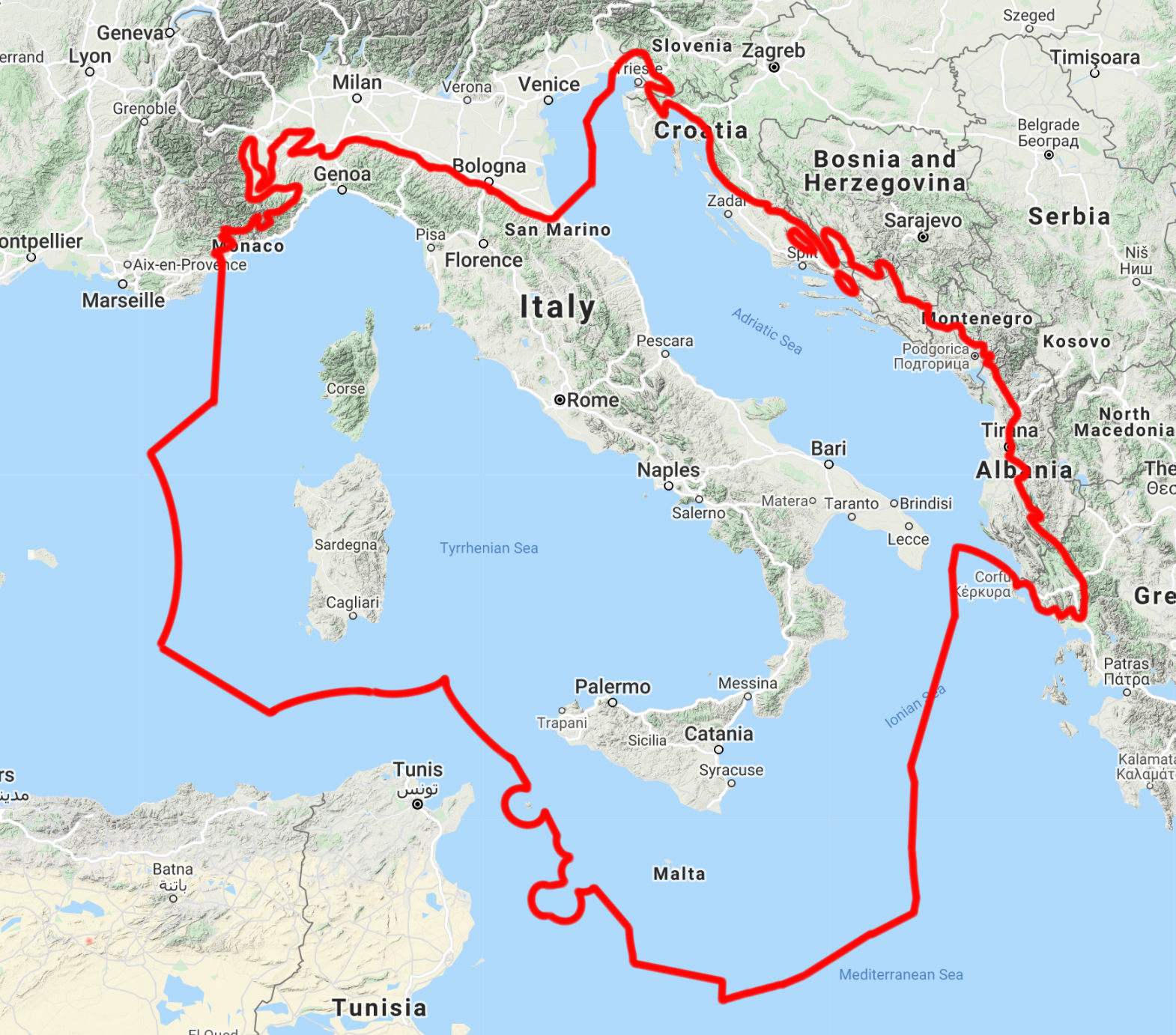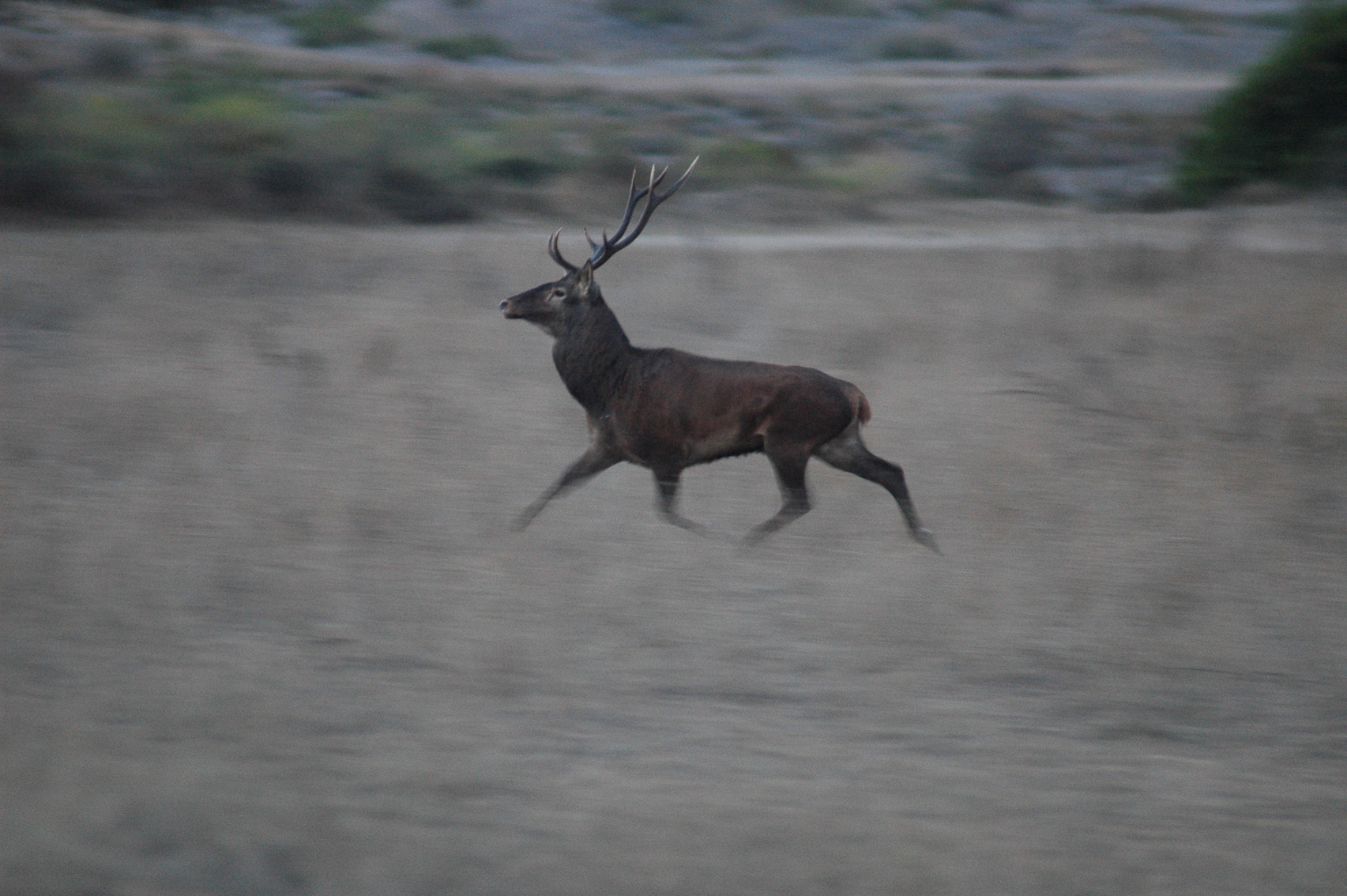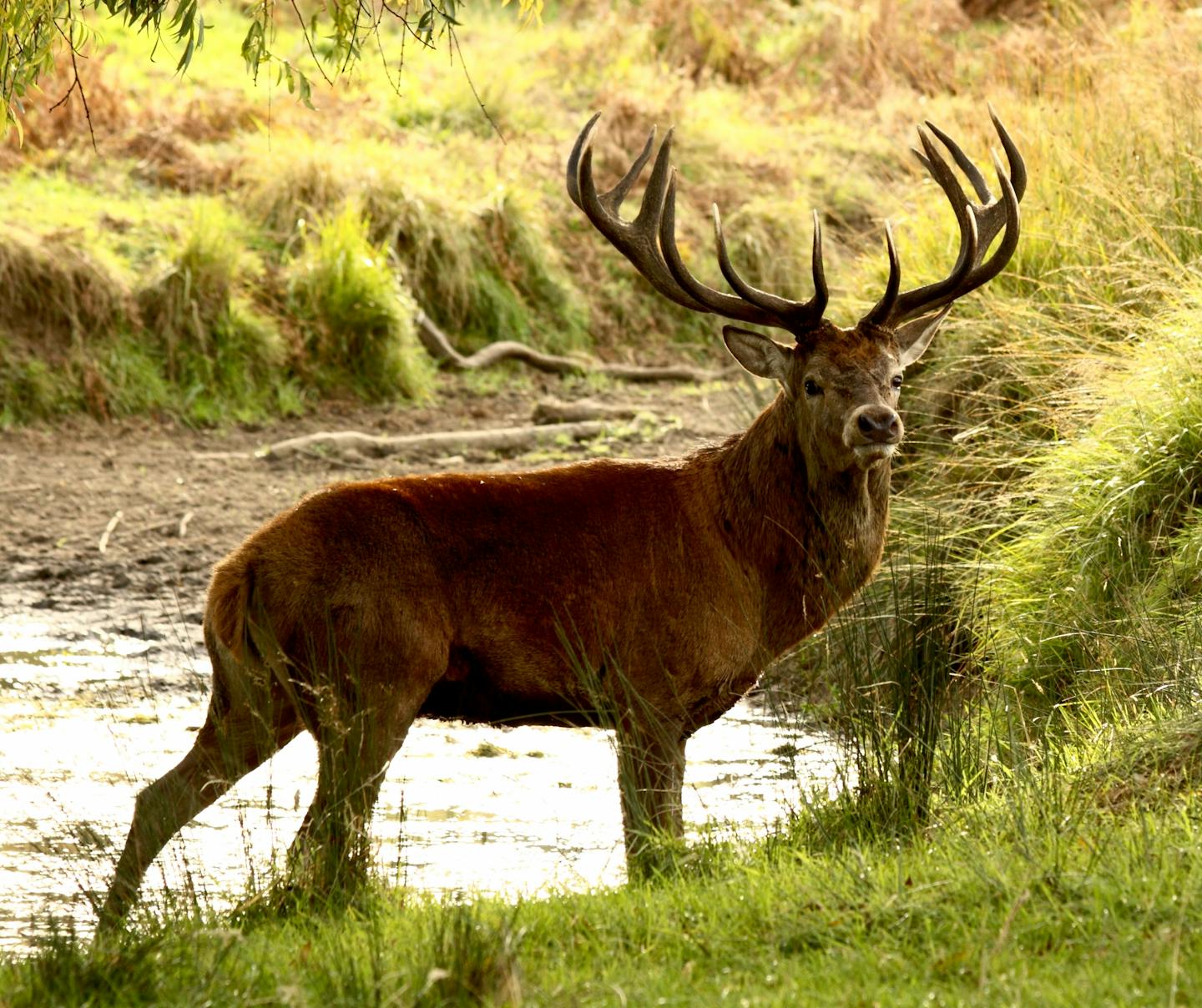Why the Corsican red deer oddly eats its own antlers
One Earth’s “Species of the Week” series highlights an iconic species that represents the unique biogeography of each of the 185 bioregions of the Earth.
Steep mountains, woodlands, and open prairies characterize the Corsica (France) and Sardinia (Italy) islands. Due to their isolation, they have become biodiversity hotspots of endemic plants. The species that help keep this remarkable vegetation flourishing is the Corsican red deer (Cervus elaphus corsicanus).

The Corsican red deer is the Iconic Species of the Adriatic Sea & Central Mediterranean Mixed Forests Bioregion (PA19).
One of many red deer subspecies
Part of the red deer (Cervus elaphus) family, the Corsican is smaller and more graceful than its continental counterpart. Its cousins live in patches of well-preserved habitats in Europe, Asia Minor, and western and central Asia. In each bioregion, there is a different subspecies.
Size and that distinct red coat
Stags, or males, can weigh up to 220 kilograms (485 lb), measuring about 1.2 meters (4 ft) tall and 2.3 meters (7.5 ft) long. Hinds, or females, are smaller, weighing an average of 160 kilograms (353 lb) and measuring 1.1 meters (3.6 ft) tall and 2.2 meters (7.2 ft) long.
Red deer are dark copper-brown in summer and turn grayish-brown in winter. Throughout the year, their underbelly is a creamy tone. The face and neck of the hinds are paler than that of stags. Their tail is short and dark on top while white and hairy beneath.
The unique cycle and nutritional value of antlers
One of the fascinating features of the red deer is its antlers. It goes through a yearly growth cycle of formation, calcification, drying out, dying, and falling out.
Spring is announced in the forest by the falling of the deer’s antlers. Biologists explain that the increasing day length throughout January and February triggers a reduction in circulating testosterone, so by mid-March, antlers are cast. Each year, the antlers acquire a few more branches or pedicles as the stag ages.
An interesting fact is that antlers are rich in essential minerals such as calcium, phosphorous, sulfur, magnesium, potassium, sodium, and iron. They are also a source of essential amino acids. So much so that red deer tend to chew on antlers that they or some other deer have recently shed.
A varying diet of vegetation
Red deer are opportunistic, meaning they can adapt and eat whichever vegetation is most prevalent. In summer, when herds are in higher altitudes, they feed on herbs, fruits, forbs, grasses, fungi, heaths and bramble, acorns, beech mast, and crops in fields bordering the forest.
At the beginning of autumn, which coincides with the rut, or breeding season, they lose their appetite. As they prepare for winter, they occupy lower elevations and feed on ferns, lichens, shrubs, and woody branches from various trees.
Aside from the seasonal variation, nutrient requirements also change throughout the year. For instance, hinds need more nutrients than stags in preparation for giving birth and during lactation in June. Dietary intake tends to be very high for stags during July, August, and September as they grow their antlers.
The life of a fawn to a full member of the herd
Deer are born 225 to 245 days after mating occurs in late September or early October of the prior year. When fawns are born in June, their hide is spotted.
The mother and baby spend the first few weeks on their own till they are strong enough to join the herd. After two months of weaning, fawns begin browsing, accompanied by the hind during the first year of life.
By the age of ten months, the young male begins developing antlers. Though it reaches sexual maturity at sixteen months, it does not participate in the rut until they are six years old and have fully developed antlers. Stags have seasonal harems of about six females and their yearling calves.

Image credit: Creative Commons, Marce83
Compared observations by the Maya
It is impressive to see how the ancestors of today’s Maya people of the Yucatan Peninsula created a calendar some three thousand years ago that highlights two critical moments of the white-tailed deer (Odocoileus virginianus) yearly life cycle. These moments are comparable to those of the red deer.
On the Maya calendar called Jaab, the month starting Spring day (March 21st) is called ‘Deer’ or Keej because males cast their antlers. The month that begins on Autumn day (September 22nd) is called ‘Deer Spirit’ or Sip because this spirit is guarding that no hunter will interfere with the time of the rut.
Reintroduction and harmonious conservation efforts
The Corsican red deer was at risk of extinction in the mid-twentieth century due to fragmentation, forest fires, legal hunting, and poaching. Over the last decades, national and international protection measures, awareness campaigns, and reintroductions have significantly increased numbers and distribution range.
Conservationists are developing models to ensure the long-term survival of red deer in Sardinia. They monitor their range after they are relocated to the island.
They have to carefully monitor ranging behavior because sheep herds in this region are widespread, meaning there is a tendency to overlap between wild and domestic ungulates. Unfortunately, this overlap increases the likelihood of sheep becoming infected with the blue tongue virus, carried by about 27% of the Corsican red deer population. While it does not affect the deer, the virus impacts the sheep.
The challenge is that to ensure the long-term survival of the Corsican red deer, “a network of viable populations is needed,” said Francesco Riga from the Institute for Environmental Protection and Research in Rome, Italy.
It is a tricky conservation line to tread, reintroducing a vital grazer back to its habitat while also respecting herders and their flocks living off the land. Riga and his team reintroducing Corsican red deer believe this balance can be achieved if sanitary risks are minimized through monitoring.
This harmonious conservation model can be emulated worldwide, preserving essential and magnificent species like the Corsican red deer.
Explore the Bioregions


